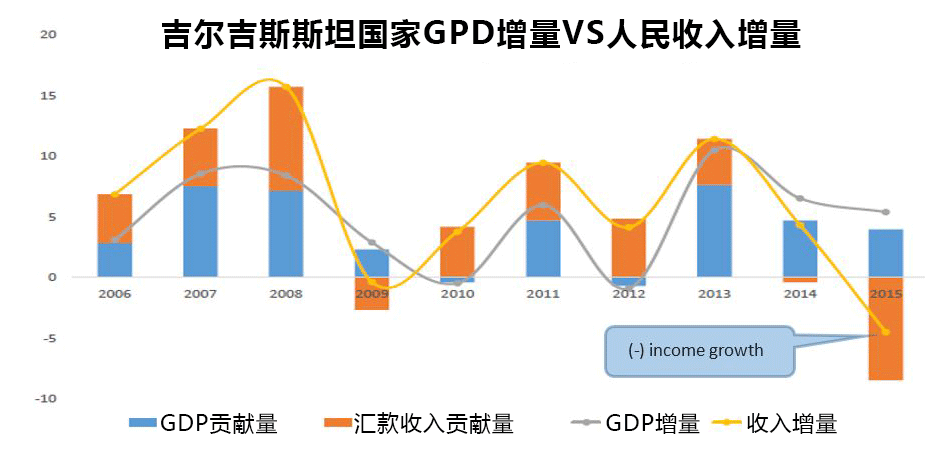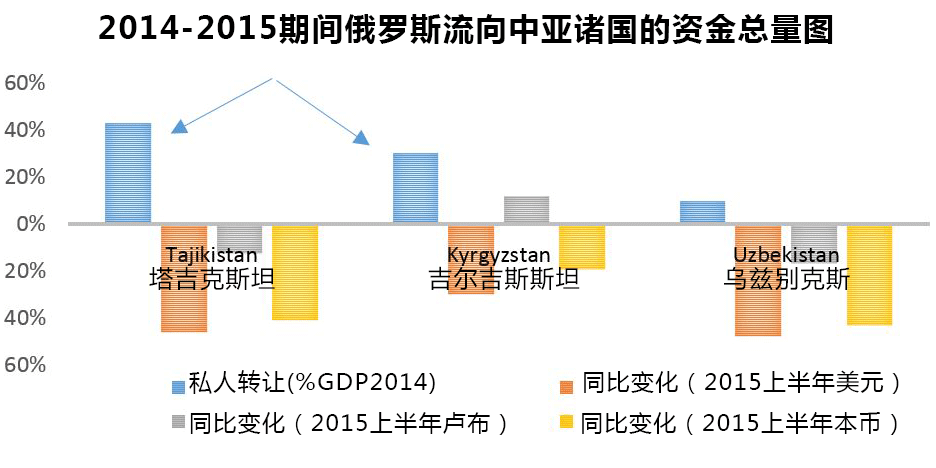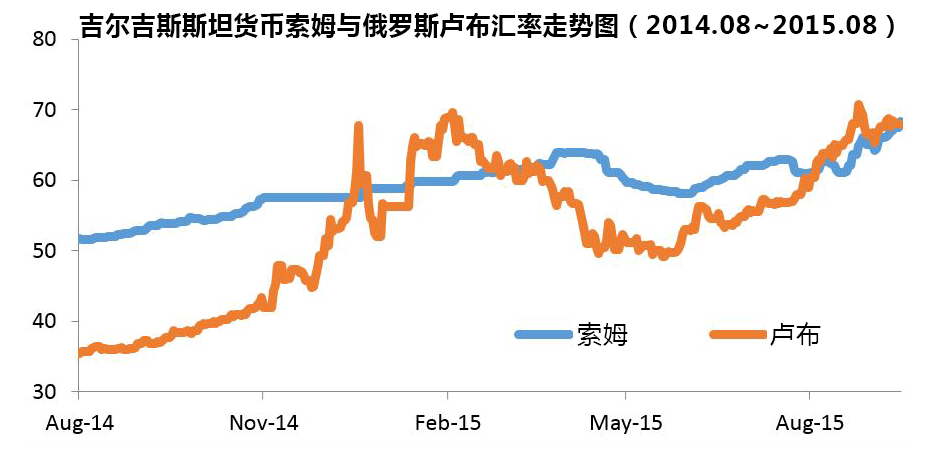The conventional wisdom is that low world prices for oil only hurt rich exporting countries, while generating a windfall for poor net importer economies.
However, in Central Asia, the story is more complicated. This is because the region’s poorer countries, Tajikistan and Kyrgyzstan, depend critically on Russia through trade and remittances.
Falling remittances, reflecting the weakness of the Russian Ruble
According to just-released Russian Central Bank data, outward remittances from Russia fell sharply in the first half of the year, in USD terms. In the first six months of 2015 (relative to the same time in 2014) private transfers from Russia to Tajikistan and Kyrgyzstan are reported to have fallen by over 45% and 30% respectively. While less exposed, Uzbekistan has experienced a loss of even greater magnitude: -48%.
This dramatic drop essentially reflects the lower purchasing power of the ruble income that migrants earn. On balance, outward remittances have remained relatively stable in ruble terms, despite the slowdown in Russia. However, their value in US dollars or local currency terms has plummeted with the sharp depreciation of the Russian currency. In other words: with the same income earned in rubles, migrants and their families can only purchase a fraction of the goods and services they previously enjoyed.
External imbalances putting national currencies under stress
In Tajikistan and Kyrgyzstan, remittances are critical to balance the current account and finance large trade deficits. The most immediate impact of lower remittances will be (1) import compression, (2) growing CA deficits – and higher external financing needs, and (3) depreciating currencies.
Reflecting external imbalances, national currencies are under significant pressure. Over the first half of 2015, the Kyrgyz som and Tajik somoni lost over 10% and 15%, respectively, of their value against the dollar, despite significant central bank intervention in the former and stricter currency controls in the latter. In Uzbekistan, the spread between official and curb rates widened significantly – to 80%.
A significant income loss, with recent poverty gains at risk
Lower remittances will affect growth (via dampened consumption), but looking at GDP alone would underestimate the magnitude of the shock. For much of the past decade, income growth has been consistently higher than GDP growth in Central Asia’s poorer countries, allowing households to expand their consumption well above levels afforded by the growth in domestically generated income.
This pattern could be reversed. For the Kyrgyz Republic, we expect the decline in remittances to translate into negative income growth in 2015 – despite positive output expansion.
In turn, the steady decline in poverty that the Kyrgyz Republic and Tajikistan have witnessed in recent years could come to a halt.
In Tajikistan, the World Bank monitors household consumption trends in real time through the Listen to Tajikistan monthly high frequency phone survey (of 800 households). There is evidence that remittance receipts have fallen (by 22% for households in the bottom 40%, between early-May and mid-July), mirrored by a decline in overall household income (-23% per capita income for the same group).
This suggests that households are unable to fully compensate for the remittance shortfall in the short run. Predictably, micro-data also shows that, while poverty continued to decline in 2015, it did so at a slower rate.
For much of the last decade, remittances acted as a “safety valve” in Central Asia’s poorest economies, supplementing insufficient domestic wealth creation and masking structural shortcomings. In the foreseeable future, however, this lifeline may no longer be available. This puts the onus on us to redouble efforts at finding domestic sources of prosperity for Central Asia’s poorest countries and protecting the most vulnerable in these difficult times ahead.
 反观,随着贫困状态逐步趋于稳定,可以预见未来几年内吉尔吉斯斯坦和塔吉克斯坦两国的贫困态势可能会停滞。
反观,随着贫困状态逐步趋于稳定,可以预见未来几年内吉尔吉斯斯坦和塔吉克斯坦两国的贫困态势可能会停滞。
 石油圈
石油圈


